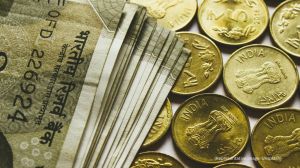PSU banks gain lead in home, auto loans as retail credit demand rebounds
Loans above Rs 75 lakh now contribute 39.4 per cent of total originations. PSU banks strengthened their lead in the segment, lifting their market share to 50 per cent, according to data from CRIF High Mark, a credit information bureau registered with the RBI.
 Home loan origination surged to Rs 3.02 lakh crore in Q2, up 25 per cent quarter-on-quarter, supported by an 18 per cent rise in loan volumes and a clear move toward high-value credit.
Home loan origination surged to Rs 3.02 lakh crore in Q2, up 25 per cent quarter-on-quarter, supported by an 18 per cent rise in loan volumes and a clear move toward high-value credit.Public sector banks have gained an edge over private lenders in the personal loan market, particularly in home and auto loans, as demand continued to recover in the second quarter ended September of FY26. Retail and consumption loan outstandings grew 18 per cent on a year-on-year basis and 4.5 per cent quarter-on-quarter, led by gold loans, auto loans and two-wheeler loans, says a report.
Home loan origination surged to Rs 3.02 lakh crore in Q2, up 25 per cent quarter-on-quarter, supported by an 18 per cent rise in loan volumes and a clear move toward high-value credit. Loans above Rs 75 lakh now contribute 39.4 per cent of total originations. PSU banks strengthened their lead in the segment, lifting their market share to 50 per cent, according to data from CRIF High Mark, a credit information bureau registered with the RBI.
Loan origination refers to the entire process of creating a new loan — from the moment a borrower applies to the moment the lender approves and disburses the money. Overall personal loan portfolios grew 12 per cent year-on-year and 2.9 per cent sequentially, helped by a strong recovery in fresh disbursals to Rs 2.92 lakh crore (+32 per cent quarter-on-quarter or QoQ). Large-ticket loans above Rs 10 lakh accounted for 37.4 per cent of origination value, largely driven by PSU banks. At the other end of the spectrum, NBFCs continued to dominate small-ticket loans, accounting for 90 per cent of volumes, CRIF High Mark said.
In the auto loan market, portfolio growth picked up to 16.3 per cent year-on-year and 2.9 per cent quarter-on-quarter as disbursals rose to Rs 96,000 crore (+15.9 per cent QoQ) after two slow quarters. The average loan size increased to Rs 8.7 lakh. PSU banks expanded their share to 40.4 per cent, while NBFCs maintained a strong grip on volumes.
Gold loans surged, with portfolio outstanding jumping 35.8 per cent year-on-year and 8.6 per cent quarter-on-quarter to Rs 14.5 lakh crore. This was propelled by stricter norms for unsecured credit and demand for quick, collateral-backed financing amid high gold prices. Origination value grew fastest among all products (53 per cent), with NBFCs leading the volume game and PSU banks leading value.
Sachin Seth, chairman of CRIF High Mark and regional managing director – CRIF India & South Asia, said the data reflects strong demand and robust lender performance.
“India’s retail credit cycle is on a stable footing, led by a decisive shift toward secured lending and more responsible underwriting,” he said. “How India Lends (report) is designed to decode these transitions and equip lenders and policymakers with actionable intelligence.”
On a year-on-year basis, non-food bank credit grew by 10.2 per cent as on the fortnight ended September 19, 2025, compared to 13.0 per cent during the corresponding fortnight of the previous year (September 20, 2024), according to the RBI. Credit to agriculture and allied activities registered a y-o-y growth of 9.0 per cent (16.4 per cent in the corresponding fortnight of the previous year). Credit to industry recorded a y-o-y growth of 7.3 per cent, compared with 8.9 per cent in the corresponding fortnight of last year.



- 01
- 02
- 03
- 04
- 05




























